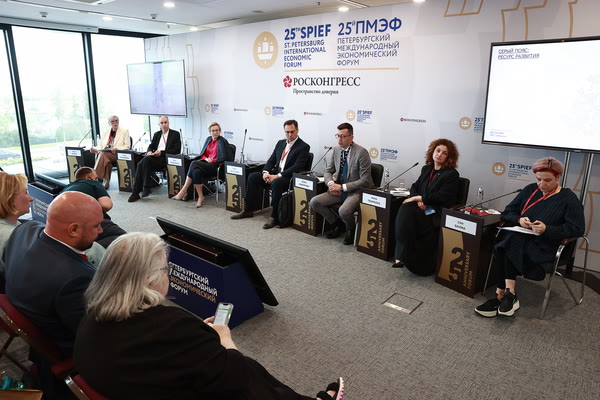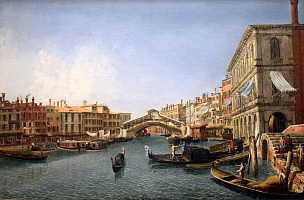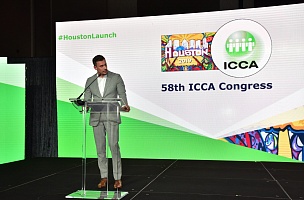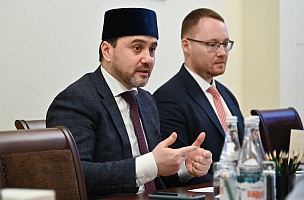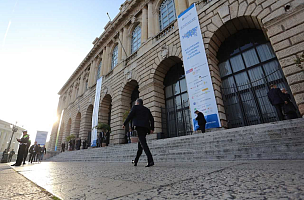Key conclusions
Identifying new architectural goals
“Architecture is needed in order to create an agenda, a concept. On the one hand, it is a craft, on the one hand, and on the other, it is a conceptual thing. <…> The city, the buildings say something, produce something. This is the approach to creating something. <…> St. Petersburg was not built as a cultural city, it was built as an innovative city, as a model of Russia's connection with the external environment. <…> Is architecture needed today? All the processes that are happening, are happening on the Internet. If you ask a young man if he needs new buildings, he will say that the ones that already exist are enough for him,” said Bureau Bernaskoni founder Boris Bernaskoni.
“There is an expansion of the boundaries of the historical centre of St. Petersburg. <…> New points of growth are emerging,” said Anton Finogenov, Deputy General Director, DOM.RF Foundation.
“City museums are in an advantageous position in that we do not have any clear themes. We must represent life around us as a whole. <...> This, on the one hand, is a very big responsibility, because we can talk about everything. On the other hand, it gives us very broad opportunities in terms of topics and problems that we can touch on,” said Anna Trapkova, General Director, Museum of Moscow.
PROBLEMS
There are insufficient public spaces and a lack of coordination among community members
“We still see a shortage of not just buildings, but open public spaces as well,” said Anton Finogenov, Deputy General Director, DOM.RF Foundation.
“It is difficult for cities with such a historical heritage as, for example, St. Petersburg to exist. At the same time, we understand that St. Petersburg was initially a challenging city for Russia; a city developing dynamically. The city is changing in one way or another. We cannot turn it into a frozen monument to itself,” Milena Orlova, Editor-in-Chief, The Art Newspaper Russia.
“In order to restart, it is not enough to have initiatives from below. <...> We continue to exist on initiative circles, but we always lack power and business. One cannot say that the authorities are not coping. No, they simply cannot take out such a number of self-organizations,” Liza Savina, co-founder, Sparta Cultural Initiatives Foundation.
SOLUTIONS
Audit of monuments and a new approach to development
“We should conduct some kind of audit of architectural monuments across the country, in all regional capitals. It is necessary to revise everything we have, and develop mechanisms for those objects that actually require conservation, require that life return to them, that people use them,” Vladimir Koshelev, First Deputy Chairman of the Committee of the State Duma of the Federal Assembly of the Russian Federation for Construction, Housing and Communal Services.
“The quality of development needs to be taken to a new level. This is not only exclusively private development, which forms residential development and business centres. This is a new quality of projects that, on the one hand, would solve environmental problems, such as soil pollution, create green parks and modern public spaces, which will in turn develop a new function, that of a creative post-industrial economy,” Anton Finogenov, Deputy General Director, DOM.RF Foundation.
Multidisciplinary Approach to Conservation and New Trends
“We have taken a multidisciplinary approach in order to preserve the historic ensemble. But we never considered these ensembles exclusively as museums, because we did not want to turn cities into museums. For us, this was not the main principle that UNESCO implemented. <...> We must develop special concepts for the development of cities,” Mounir Bouchenaki, Incumbent Director, Arab Regional Centre for World Heritage.
“It is important that a new culture develops, but the historical environment acquires new meanings for new generations. This would help to interpret the historical heritage in a new way. It is essential that there are new professionals who are able to interpret, create, set new trends, invent attractive stories using the cultural code, the urban folklore,” Milena Orlova, Editor-in-Chief, The Art Newspaper Russia.
Cities need strategies to protect historic centres
“We need strategies to protect historical centres, and we must also promote cultural exchanges. The cultural identity of cities must necessarily be included in the strategy. And we must emphasize the diversity, cultural and architectural uniqueness of cities, we must preserve their historical appearance. This is what will allow for the sustainable development of cities,” Mounir Bouchenaki, Incumbent Director, Arab Regional Centre for World Heritage.
For more information, visit the Roscongress Foundation’s Information and Analytical System at roscongress.org/en


